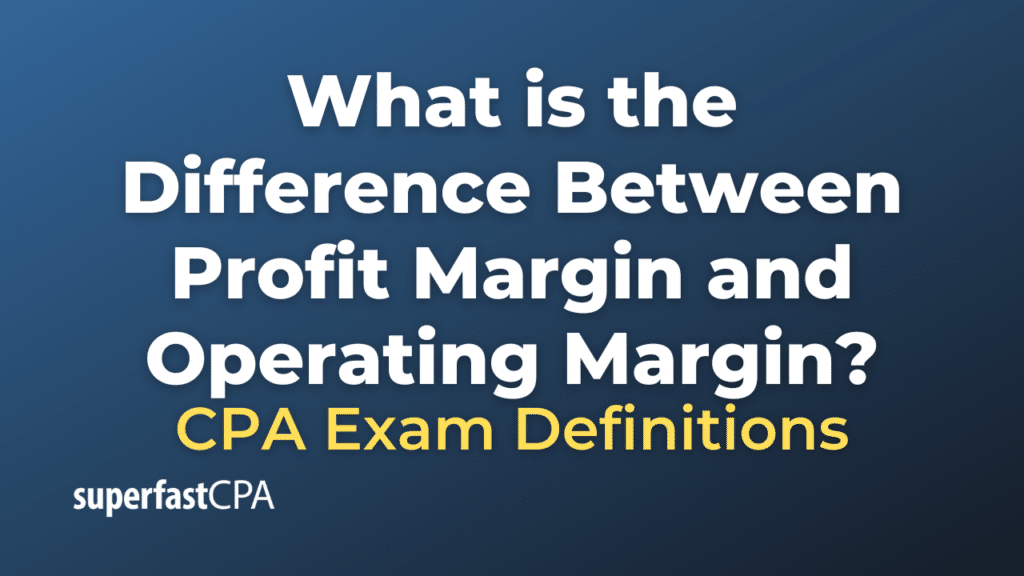Difference Between Profit Margin and Operating Margin
Profit margin and operating margin are both important indicators of a company’s financial health, but they measure slightly different things:
- Operating Margin: This measures a company’s profit after deducting direct costs associated with production, like cost of goods sold (COGS), and operational costs such as salaries, rent, and utilities. It does not include non-operating costs like taxes and interest. In other words, operating margin shows how efficient a company is at controlling the costs and expenses associated with their normal business operations.
- Net Profit Margin: This measures a company’s total earnings after all expenses. It includes not only COGS and operating expenses, but also taxes, interest, and any other expenses. The net profit margin provides a more comprehensive view of a company’s profitability by taking into account all costs associated with doing business.
In summary, operating margin gives you a sense of a company’s operational efficiency, while net profit margin provides a broader view of its overall profitability. Both are important for understanding a company’s financial health and efficiency, but they offer different perspectives.
Example of the Difference Between Profit Margin and Operating Margin
Let’s use a simplified example to illustrate the difference between Operating Margin and Net Profit Margin.
Suppose you have a company that sells handmade furniture. Here’s a simplified version of your income statement for last year:
- Revenue (Sales): $1,000,000
- Cost of Goods Sold (COGS): $400,000
- Operating Expenses (Rent, Salaries, Utilities, etc.): $200,000
- Interest Expenses: $50,000
- Taxes: $100,000
Now, let’s calculate the Operating Margin and the Net Profit Margin.
- Operating Margin:
First, you calculate your Operating Profit:
Operating Profit = Revenue – COGS – Operating Expenses = $1,000,000 – $400,000 – $200,000 = $400,000
Then, you can calculate the Operating Margin:
Operating Margin = (Operating Profit / Revenue) x 100 = ($400,000 / $1,000,000) x 100 = 40%
This means that for every dollar of sales, 40 cents is left after paying for the cost of production and the operating expenses, like rent, salaries, and utilities.
- Net Profit Margin:
First, you calculate your Net Profit:
Net Profit = Operating Profit – Interest – Taxes = $400,000 – $50,000 – $100,000 = $250,000
Then, you can calculate the Net Profit Margin:
Net Profit Margin = (Net Profit / Revenue) x 100 = ($250,000 / $1,000,000) x 100 = 25%
This means that for every dollar of sales, 25 cents is left after paying all expenses, including interest and taxes.
So, in this example, the operating margin gives you a sense of the company’s profitability from its core business operations, while the net profit margin tells you how much actual profit the company is left with, after accounting for all expenses, including taxes and interest.













